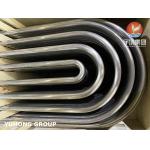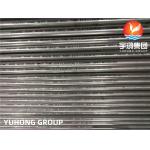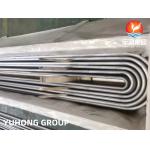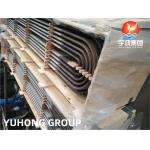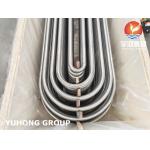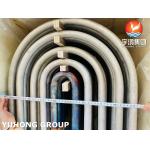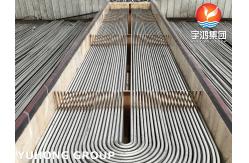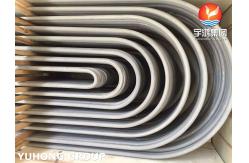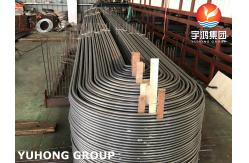U Bending ASTM A213 TP304L Stainless Steel For Boiler and Heat
Exchanger
YUHONG GROUP deal with stainless steel seamless pipe and tube already more than
33 years, every year sell more than 80000 tons of stainless steel
seamless pipe and tube. Our client already cover more than 65
countries. Our stainless steel seamless pipe and tube was width
used in Mining, Energy, Petrochemical, Chemical Industry, Food
plant, Paper plant, Gas and Fluid Industry etc.
Description
Grade304 is the standard "18/8" stainless; it is the most versatile
and most widely used stainless steel, available in a wider range of
products, forms and finishes than any other. It has excellent
forming and welding characteristics. The balanced austenitic
structure of Grade 304 enables it to be severely deep drawn without
intermediate annealing, which has made this grade dominant in the
manufacture of drawn stainless parts such as sinks, hollow-ware and
saucepans. for these applications it is common to use special
"304DDQ" (Deep Drawing Quality) variants. Grade 304 is readily
brake or roll formed into a variety of components for applications
in the industrial, architectural, and transportation fields. Grade
304 also has outstanding welding characteristics. Post-weld
annealing is not required when welding thin sections.
In fact, according to the content of chromium and nickel, all of
them are 304 stainless steel, with 18% chromium (CR) and 8% nickel
(Ni), but the main difference lies in the carbon content.
Among them, the highest carbon content is 304H, the lowest is 304L,
and the carbon content of 304 stainless steel is between the two.
The higher the carbon content, the worse the corrosion resistance
of stainless steel. Different carbon content also leads to
different prices. However, in actual use, different requirements
for different uses are different.
Grade304L, the low carbon version of 304, does not require
post-weld annealing and so is extensively used in heavy gauge
components (over about 6mm).Grade304H with its higher carbon
content finds application at elevated temperatures. The austenitic
structure also gives these grades excellent toughness, even down to
cryogenic temperatures.
Chemical composition
America standard | European standard | C % max | Mn % max | P % max | S % max | Si % max | Cr % | Ni % | Mo% |
TP304 | 1.4301 | 0.080 | 2.0 | 0.045 | 0.03 | 1.00 | 18.00-20.00 | 8.00-11.00 | - |
TP304L | 1.4307 | 0.035 | 2.0 | 0.045 | 0.03 | 1.00 | 18.00-20.00 | 8.00-12.00 | - |
TP304H | / | 0.04-0.10 | 2.0 | 0.045 | 0.03 | 1.00 | 18.00-20.00 | 8.00-11.00 | - |
Mechanical properties
– | Tensile Strength | Yield Strength | Elongation | Hardness | Hardness |
Grade | (MPa) min | 0.2% Proof (MPa) min | (% in 50mm) min | Rockwell B (HR B) max | Brinell (HB) max |
304 | 515 | 205 | 35 | 90 | 192 |
304L | 485 | 170 | 35 | 90 | 192 |
304H | 515 | 205 | 35 | 90 | 192 |
Grade specifications for 304L grade stainless steel
Grade | UNS No | Old British | Euronorm | Swedish SS | Japanese JIS |
BS | En | No | Name |
304 | S30400 | 304S31 | 58E | 1.4301 | X5CrNi18-10 | 2332 | SUS 304 |
304L | S30403 | 304S11 | - | 1.4306 | X2CrNi19-11 | 2352 | SUS 304L |
304H | S30409 | 304S51 | - | 1.4948 | X6CrNi18-11 | - | - |
These comparisons are approximate only. The list is intended as a
comparison of functionally similar materials not as a schedule of
contractual equivalents. If exact equivalents are needed original
specifications must be consulted. |
Application
